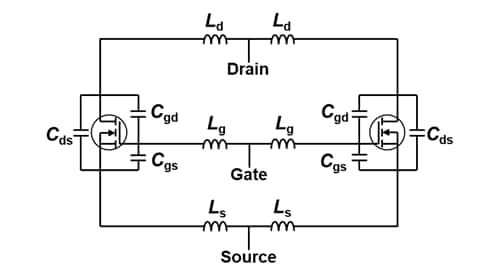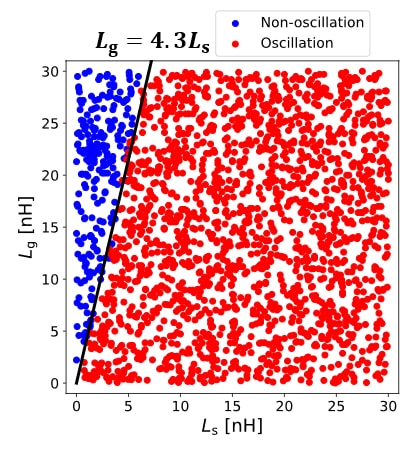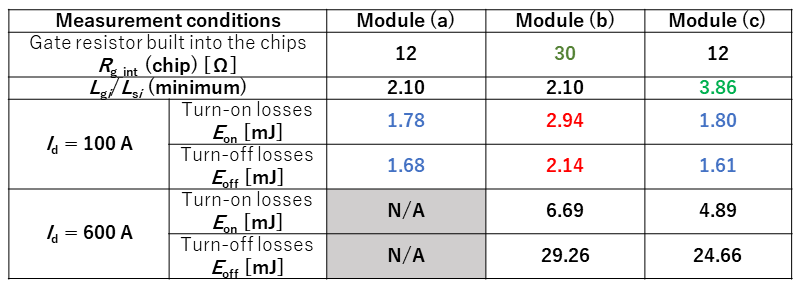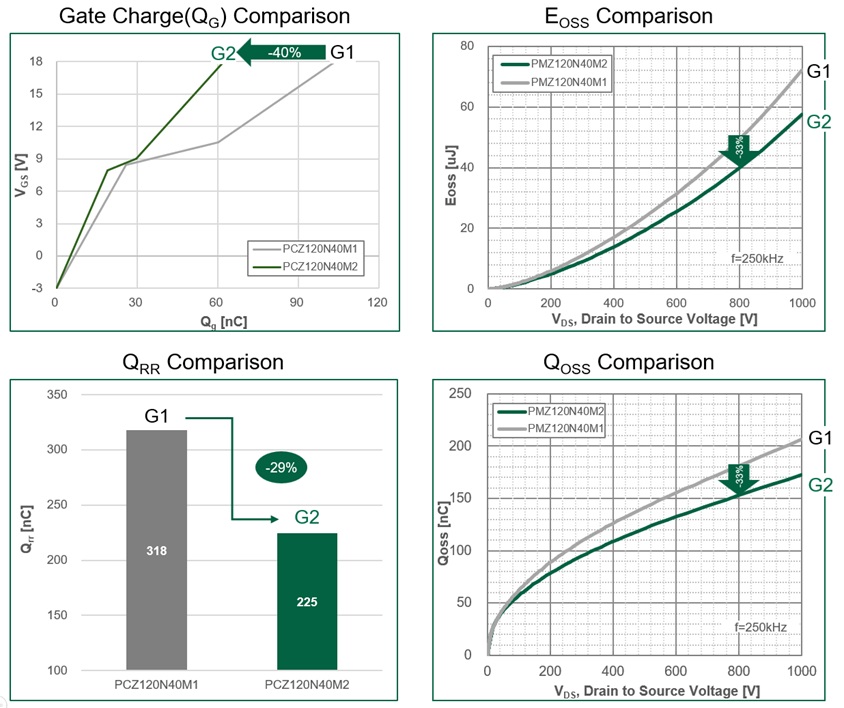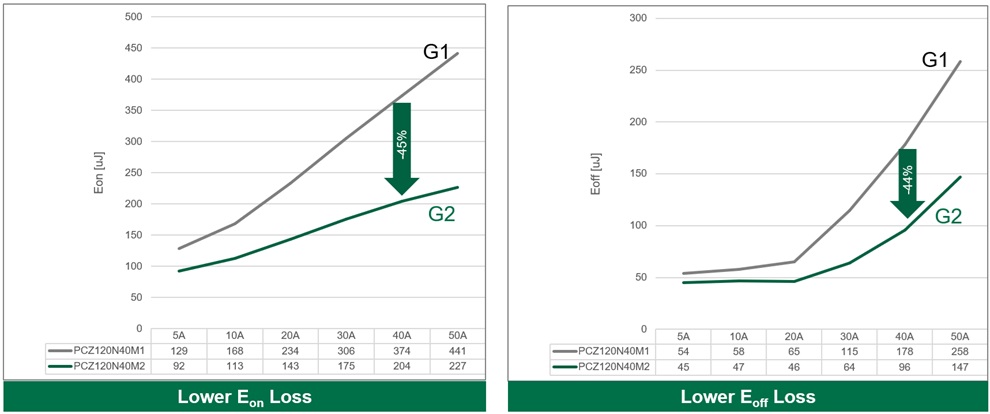-
LATEST NEWS / PRODUCT & TECHNOLOGY / SiC / WBG1 Min Read
MCC introduced the latest additions to its robust portfolio: 10 1200V SiC N-channel MOSFETs in versatile TO-247-4, TO-247-4L, and TO-247AB packages. These new MOSFETs are available in 3-pin and 4-in (Kelvin source) configurations and meet the rising demand for high-power, high-voltage applications.
Boasting exceptional on-resistance values from 21mΩ to 120mΩ (typ.) and fast switching speeds, these components are the ones you can count on for reliable performance. Their excellent thermal properties and fast intrinsic body diode ensure smooth, efficient operation in the most challenging conditions, making them a must-have for critical power systems.
Features & Benefits:
- High-power capability: 1200V MOSFET with SiC technology
- Fast, reliable switching: Intrinsic body diode improves efficiency & ruggedness Enhanced performance: High switching speed with low gate charge
- Wide on-resistance selection: ranging from 21mΩ to 120mΩ (typ.)
- Efficiency: Superior thermal properties and low switching losses
- Durability: Avalanche ruggedness
- Versatility: TO247 3-pin and 4-pin package options
Original – Micro Commercial Components
-
PANJIT introduced latest bridge rectifier packaging: the low-profile GBJA and KBJB. In the ever-evolving world of electronic components, where space efficiency is increasingly in demand, the new low-profile packages offer excellent solutions. When integrated into the PCB, the GBJA can reduce the total height by 34% compared to the GBJ, and the KBJB can reduce it by 36% compared to the KBJ package. This substantial reduction in body height makes them ideal for applications where space is at a premium, responding to the increasing demand for compact and efficient power solutions.
Key Features
Low Body Profile Design: The GBJA and KBJB packages are compact, significantly reducing height without changing pitch angles and body width. When incorporated into the PCB, the GBJA offers a 34% reduction in total height compared to the GBJ, while the KBJB achieves a 36% reduction compared to the KBJ package, offering excellent solutions for space-constrained designs.
Design Compatibility: By keeping the pitch angles and body width the same while just shortening the body height, the new packages remain compatible with the original ones, giving designers the flexibility to either maintain the original PCB layout or shrink the overall design size, including the heatsink. This adaptability ensures easy integration into existing designs and optimizes space utilization for various requirements, while also avoiding the risk of quality issues associated with traditional lead-bending methods to fit the design.Target Applications
GBJA and KBJB series are ideal for high-demand applications where compact power solutions are crucial:
• Slim Power Adapters: Perfect for creating thinner, more portable power adapters.
• Power Supplies for Gaming Consoles: Meet the needs of powerful gaming consoles with sleek, modern designs.
• TV Power Supplies: Ideal for TVs, offering unobtrusive and efficient power solutions.
By adopting the GBJA and KBJB series, manufacturers can create compact, efficient power supplies that meet the growing consumer demand for smaller, portable devices such slim TVs or other modern electronic devices.Bridge Rectifiers in GBJA and KBJB Packages
- KBJB1006
- GBJA1506
- KBJB1008
- GBJA1508
- KBJB1010
- GBJA1510
- KBJB1506
- GBJA2506
- KBJB1508
- GBJA2508
- KBJB1010
- GBJA2510
- GBJA3506
- GBJA3508
- GBJA3510
Original – PANJIT International
-
LATEST NEWS / PRODUCT & TECHNOLOGY2 Min Read
Toshiba Electronics Europe GmbH added two new 150V N-channel power MOSFET products based upon their latest generation U-MOS X-H Trench process. The TPH1100CQ5 and TPH1400CQ5 devices are designed specifically for use in high-performance switching power supplies, such as those used in data centres and communication base stations as well as other industrial applications.
With a maximum drain-source voltage (VDSS) rating of 150V and drain current (ID) handling 49A (TPH1100CQ5) and 32A (TPH1400CQ5), the new devices feature a maximum drain-source on-resistance RDS(ON).
The new products offer improved reverse recovery characteristics that are critical in synchronous rectification applications. In the case of TPH1400CQ5, the reverse recovery charge (Qrr) is reduced by approximately 73% to 27nC (typ.) and the reverse recovery time (trr) of 36 ns (typ.) is approximately 45% faster compared with Toshiba’s existing TPH1400CQH, which offers the same voltage and RDS(ON).
Used in synchronous rectification applications, the TPH1400CQ5 reduces the power loss of switching power supplies and helps improve efficiency. If the device is used in a circuit that does not operate in reverse recovery mode, the power loss is equivalent to that of the TPH1400CQH.
When used in a circuit that operates in reverse recovery mode, the new products reduce spike voltages generated during switching, helping to improve EMI characteristics of designs, and reducing the need for external filtering. The devices are housed in a versatile, surface-mount SOP Advance(N) package measuring just 4.9mm x 6.1mm x 1.0mm.
To support designers, Toshiba has developed a G0 SPICE model for rapid verification of the circuit function as well as highly accurate G2 SPICE models, for accurate reproduction of transient characteristics.
Shipments of the new devices start today, and Toshiba will continue to expand their lineup of power MOSFETs that help improve equipment efficiency.
Original – Toshiba
-
Toshiba Electronic Devices & Storage Corporation launched 650V N-channel power MOSFETs “TK068N65Z5, TK095E65Z5, TK095A65Z5, TK095V65Z5, TK115E65Z5, TK115A65Z5, TK115V65Z5 and TK115N65Z5” and added them to the lineup of Toshiba’s latest-generation DTMOSVI series with high-speed diodes (DTMOSVI (HSD)) that uses super junction structure and is suitable for high-efficiency switching power supplies for data centers and power conditioners for photovoltaic generators. Packages of the new products are TO-247, TO-220SIS, TO-220 and DFN8×8.
The new products with the DTMOSVI (HSD) process use high-speed diodes to improve the reverse recovery characteristics important for bridge circuit and inverter circuit applications. Against Toshiba’s existing product TK090A65Z of the standard type DTMOSVI, the new product TK095A65Z5 achieves an approximately 65% reduction in reverse recovery time (trr), and an approximately 88% reduction in reverse recovery charge (Qrr) (measurement conditions: -dIDR/dt=100A/μs).
In addition, the DTMOSVI (HSD) process improves on the reverse recovery characteristics of Toshiba’s existing products DTMOSIV series with high-speed diodes (DTMOSIV (HSD)), and has a lower drain cut-off current at high temperatures. Furthermore, the figure of merit “drain-source On-resistance × gate-drain charge” is also lower.
The high temperature drain cut-off current of the new product TK095A65Z5 is approximately 91% lower, and the drain-source On-resistance × gate-drain charge approximately 70% lower, than in Toshiba’s existing product TK35A65W5. This advance will cut equipment power loss and help to improve efficiency.
A reference design, “1.6kW Server Power Supply (Upgraded)“, that uses the same series product TK095N65Z5 is available on Toshiba’s website.
Toshiba also offers tools that support circuit design for switching power supplies. Alongside the G0 SPICE model, which verifies circuit function in a short time, highly accurate G2 SPICE models that accurately reproduce transient characteristics are now available.
Toshiba also will continue to expand its lineup of the DTMOSVI series. This will enhance switching power supply efficiency, contributing to energy-saving equipment.
Applications
Industrial equipment
- Switching power supplies (data center servers, communications equipment, etc.)
- EV charging stations
- Power conditioners for photovoltaic generators
- Uninterruptible power systems
Features
- MOSFETs with high-speed diodes in the latest-generation DTMOSVI series
- Reverse recovery time due to high-speed diodes:
TK068N65Z5 trr=135ns (typ.)
TK095E65Z5, TK095A65Z5, TK095V65Z5 trr=115ns (typ.)
TK115E65Z5, TK115A65Z5, TK115V65Z5, TK115N65Z5 trr=110ns (typ.) - High-speed switching time due to low gate-drain charge:
TK068N65Z5 Qgd=22nC (typ.)
TK095E65Z5, TK095A65Z5, TK095V65Z5 Qgd=17nC (typ.)
TK115E65Z5, TK115A65Z5, TK115V65Z5, TK115N65Z5 Qgd=14nC (typ.)
Original – Toshiba
-
LATEST NEWS / PRODUCT & TECHNOLOGY1 Min Read
Nexperia released 650V ultra- and hyperfast recovery rectifiers in D2PAK Real-2-Pin (R2P) packaging for use in various automotive, industrial and consumer applications including charging adapters, photovoltaic (PV), inverters, servers and switched mode power supplies (SMPS).
Combining planar die technology with a state-of-the-art junction termination (JTE) design, these rectifiers offer high power density, fast switching times with soft recovery and excellent reliability. They are encapsulated in a D2PAK Real-2-Pin Package (SOT8018), which offers the same package outline as the standard D2PAK package but has only two pins instead of three (the middle cathode pin has been removed). This increases the pin-to-pin distance from 1.25mm to over 4mm, which allows to meet the creepage and clearance requirements stated in the IEC 60664 standard.
“These recovery rectifiers further demonstrate Nexperia’s expertise in the field of semiconductor device packaging” according to Frank Matschullat, Head of Product Group Power Bipolar Discretes at Nexperia. “By taking the innovative step of removing the cathode pin from a standard D2PAK package, Nexperia has created a Real-2-Pin package that can meet the creepage and clearance requirements, in particular for high voltage automotive applications.”
Original – Nexperia
-
LATEST NEWS / PRODUCT & TECHNOLOGY / SiC / WBG3 Min Read
Vishay Intertechnology, Inc. introduced 16 new Gen 3 1200 V silicon carbide (SiC) Schottky diodes. Featuring a merged PIN Schottky (MPS) design, the Vishay Semiconductors devices combine high surge current robustness with low forward voltage drop, capacitive charge, and reverse leakage current to increase efficiency and reliability in switching power designs.
The next-generation SiC diodes released today consist of 5 A to 40 A devices in the TO-220AC 2L, TO-247AD 2L, and TO-247AD 3L through-hole and D2PAK 2L (TO-263AB 2L) surface-mount packages. The diodes offer a low capacitance charge down to 28 nC, while their MPS structure — which features a backside thinned via laser annealing technology — delivers a reduced forward voltage drop of 1.35 V. In addition, the devices’ low typical reverse leakage current down to 2.5 µA at 25 °C reduces conduction losses, ensuring high system efficiency during light loads and idling. Unlike ultrafast diodes, the Gen 3 devices have virtually no recovery tail, which further improves efficiency.
Typical applications for the diodes will include AC/DC PFC and DC/DC ultra high frequency output rectification in FBPS and LLC converters for solar power inverters; energy storage systems; industrial drives and tools; and datacenters. For the harsh environments of these applications, the devices combine operating temperatures to +175 °C with forward surge ratings to 260 A for high robustness. In addition, diodes in the D2PAK 2L package feature a molding compound with a high CTI ≥ 600, ensuring excellent electrical insultation at elevated voltages.
Offering high reliability, the RoHS-compliant and halogen-free devices have passed higher temperature reverse bias (HTRB) testing of 2000 hours and temperature cycling testing of 2000 thermal cycles.
Device Specification Table:
Part # IF(AV) (A) IFSM (A) VF at IF (V) QC (nC) Configuration Package VS-3C05ET12T-M3 5 42 1.35 28 Single TO-220AC 2L VS-3C10ET12T-M3 10 84 1.35 55 Single TO-220AC 2L VS-3C15ET12T-M3 15 110 1.35 81 Single TO-220AC 2L VS-3C20ET12T-M3 20 180 1.35 107 Single TO-220AC 2L VS-3C05ET12S2L-M3 5 42 1.35 28 Single D2PAK 2L VS-3C10ET12S2L-M3 10 84 1.35 55 Single D2PAK 2L VS-3C15ET12S2L-M3 15 110 1.35 81 Single D2PAK 2L VS-3C20ET12S2L-M3 20 180 1.35 107 Single D2PAK 2L VS-3C10EP12L-M3 10 84 1.35 55 Single TO-247AD 2L VS-3C15EP12L-M3 15 110 1.35 81 Single TO-247AD 2L VS-3C20EP12L-M3 20 180 1.35 107 Single TO-247AD 2L VS-3C30EP12L-M3 30 260 1.35 182 Single TO-247AD 2L VS-3C10CP12L-M3 2 x 5 42 1.35 28 Common cathode TO-247AD 3L VS-3C20CP12L-M3 2 x 10 84 1.35 55 Common cathode TO-247AD 3L VS-3C30CP12L-M3 2 x 15 110 1.35 81 Common cathode TO-247AD 3L VS-3C40CP12L-M3 2 x 20 180 1.35 107 Common cathode TO-247AD 3L Samples and production quantities of the new SiC diodes are available now, with lead times of 13 weeks.
Original – Vishay Intertechnology
